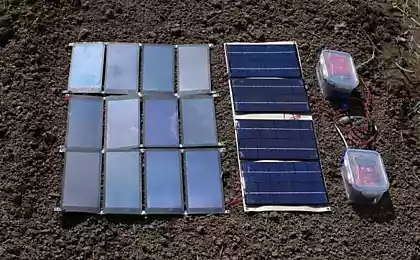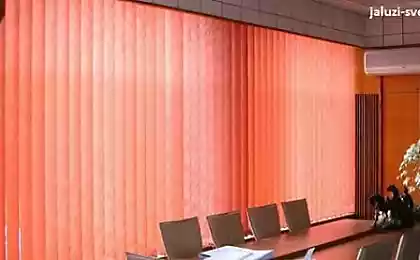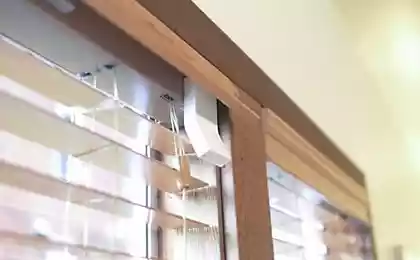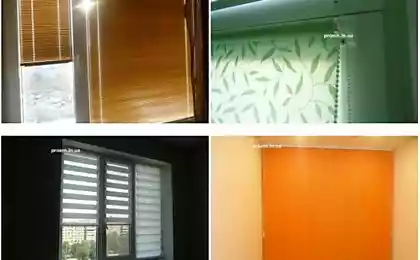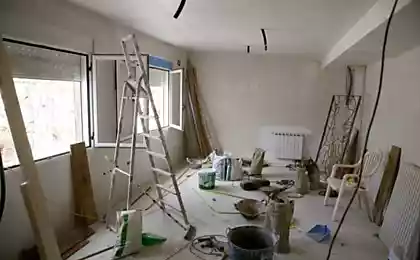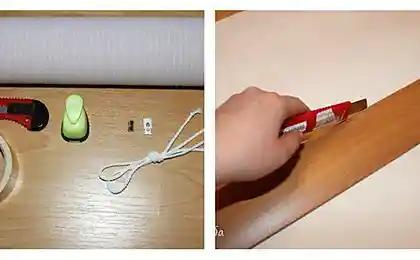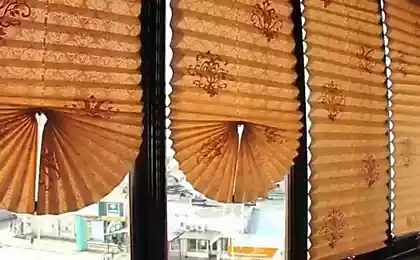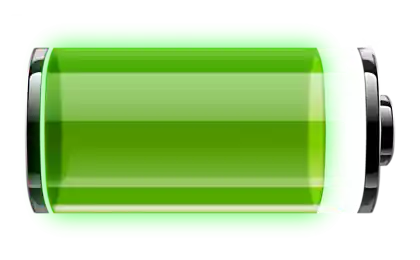588
A flexible solar panel that can be used as blinds or Wallpaper
Solar panels that convert light into electrical energy, play a significant role in stimulating the production of solar energy worldwide. However, researchers still face restrictions that impede to increase the prevalence of this technology. Improving the efficiency of batteries is an important challenge. Scientists around the world are still trying to create a compact, easy to use and inexpensive technology that could be used by anyone.
Some researchers promise that in the near future processing of light energy in your home will become a simple and commonplace procedure. Headed Shashanka Priya, the team of mechanical engineers and chemists from Virginia tech produces flexible solar panels, which deliver window blinds or wall to capture energy from the Sun and sources inside the buildings.
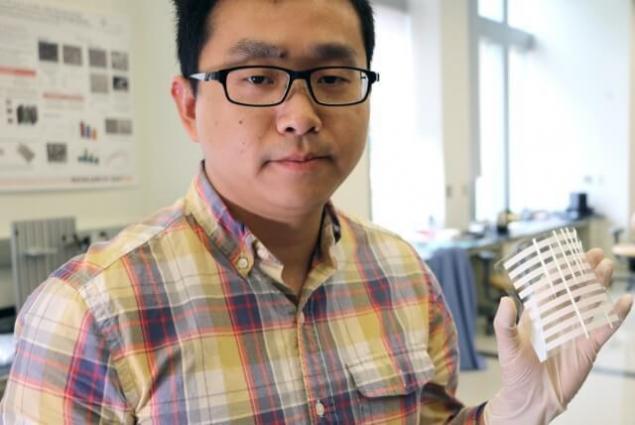
Solar modules with a thickness of less than polukilometre are created using screen printing at a low temperature. Part of a flexible five-layer structure of a material is paste-like titanium oxide. The result is a thin, flexible panel, similar to the tiles in the bathroom. These tiles can be joined together to cover a large area. One panel about the size of a human palm provides about 75 milliwatts of power. Scientists suggest that from the panel the size of an ordinary A4 sheet will be enough to easily charge your smartphone.
The work of Priya and his team is described in detail in an article published in the June issue of ACS Energy Letters. Engineers promise that their panels capture a broad range of wavelengths of light that will allow to produce energy by installing special louvers. Other work demonstrating the stability of the plates, will be published later in the same journal.
To date, flexible panels efficiency is slightly inferior to the heavier, more rigid silicon, and Priya says that requires even more research. However, it is likely that the new flexible panels will soon catch up with their more stringent "brothers".
Traditional silicon cells, which was advertised from the point of view of effectiveness as the gold standard of the industry for more than a decade, are relatively cheap. Efficiency of conversion of sunlight to electricity is 15-20%. Panel Priya gives about 10% efficiency in a standard size. The smaller the size, the greater the efficiency, so the researchers see the potential for much more efficient energy collection.
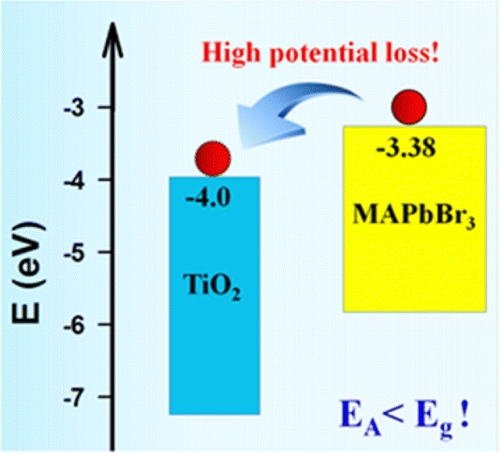
World record efficiency for solar mnogoprokhodnyj owned by two French companies – Soitec and CEA-Leti, which together with the Institute for solar energy systems Fraunhofer achieved 46% in December 2014. The previous record in this area (44.7 per cent) also belongs to the Association of institutions and companies, with the participation of the Berlin center Helmholtz.
Most silicon panels can absorb the sunlight. Flexible panels are designed so that they can absorb ambient light, for example, LEDs, incandescent lamps and fluorescent lamps.
The technology is attractive for several reasons. First, for the manufacture of modules does not require high temperature, and the equipment for their production is relatively inexpensive and easy to use. Second, it is possible to create a miniature panel that will charge all sorts of devices in the house, and the entire leaf coils that you can paste an entire room and used for power and heating. Panels get blinds or curtains that will absorb the light through the Windows. The properties of the panels are such that they do very little limitations from the point of view of light sources.
Since the flexible plate close to the conversion efficiency of rigid silicon and glass, they can be used where the old technology may not be competitive. For example, in a military uniform and backpacks. Lab is now Priya is collaborating with the research center for electronics and communications of the us army (CERDEC). If you add a flexible panel to these things, the soldiers themselves are a walking charging station. This will help to reduce the amount of wearable material-technical equipment and to reduce the weight that each individual soldier carries on his back.
"Right now we are at the forefront of this technology. We are able to produce modules of large area with high efficiency and are actively working to bring our product to market. We see a wide range of applications of this technology: from clothing to Windows to smart homes, from drones to mobile charging stations," says Priya. published
Source: geektimes.ru/post/282238/
Some researchers promise that in the near future processing of light energy in your home will become a simple and commonplace procedure. Headed Shashanka Priya, the team of mechanical engineers and chemists from Virginia tech produces flexible solar panels, which deliver window blinds or wall to capture energy from the Sun and sources inside the buildings.

Solar modules with a thickness of less than polukilometre are created using screen printing at a low temperature. Part of a flexible five-layer structure of a material is paste-like titanium oxide. The result is a thin, flexible panel, similar to the tiles in the bathroom. These tiles can be joined together to cover a large area. One panel about the size of a human palm provides about 75 milliwatts of power. Scientists suggest that from the panel the size of an ordinary A4 sheet will be enough to easily charge your smartphone.
The work of Priya and his team is described in detail in an article published in the June issue of ACS Energy Letters. Engineers promise that their panels capture a broad range of wavelengths of light that will allow to produce energy by installing special louvers. Other work demonstrating the stability of the plates, will be published later in the same journal.
To date, flexible panels efficiency is slightly inferior to the heavier, more rigid silicon, and Priya says that requires even more research. However, it is likely that the new flexible panels will soon catch up with their more stringent "brothers".
Traditional silicon cells, which was advertised from the point of view of effectiveness as the gold standard of the industry for more than a decade, are relatively cheap. Efficiency of conversion of sunlight to electricity is 15-20%. Panel Priya gives about 10% efficiency in a standard size. The smaller the size, the greater the efficiency, so the researchers see the potential for much more efficient energy collection.

World record efficiency for solar mnogoprokhodnyj owned by two French companies – Soitec and CEA-Leti, which together with the Institute for solar energy systems Fraunhofer achieved 46% in December 2014. The previous record in this area (44.7 per cent) also belongs to the Association of institutions and companies, with the participation of the Berlin center Helmholtz.
Most silicon panels can absorb the sunlight. Flexible panels are designed so that they can absorb ambient light, for example, LEDs, incandescent lamps and fluorescent lamps.
The technology is attractive for several reasons. First, for the manufacture of modules does not require high temperature, and the equipment for their production is relatively inexpensive and easy to use. Second, it is possible to create a miniature panel that will charge all sorts of devices in the house, and the entire leaf coils that you can paste an entire room and used for power and heating. Panels get blinds or curtains that will absorb the light through the Windows. The properties of the panels are such that they do very little limitations from the point of view of light sources.
Since the flexible plate close to the conversion efficiency of rigid silicon and glass, they can be used where the old technology may not be competitive. For example, in a military uniform and backpacks. Lab is now Priya is collaborating with the research center for electronics and communications of the us army (CERDEC). If you add a flexible panel to these things, the soldiers themselves are a walking charging station. This will help to reduce the amount of wearable material-technical equipment and to reduce the weight that each individual soldier carries on his back.
"Right now we are at the forefront of this technology. We are able to produce modules of large area with high efficiency and are actively working to bring our product to market. We see a wide range of applications of this technology: from clothing to Windows to smart homes, from drones to mobile charging stations," says Priya. published
Source: geektimes.ru/post/282238/


